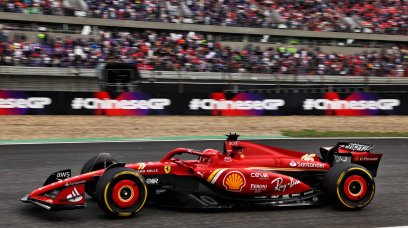With six races remaining, the 2022 World Championship standings are decidedly in favour of Red Bull and Max Verstappen, with the Dutchman having taken back-to-back wins over the trio of races held after the summer break. Even before F1 embarked on its hiatus in August, Verstappen's advantage had already become substantial thanks to nearest rival Charles Leclerc's retirement in France and the Scuderia's issues with strategy in Hungary. With this in mind, it seems appropriate to analyse the performance leap made by the RB18 over the F1-75, in order to understand in detail the factors that have contributed to the edge of the Milton Keynes-based team. It has been a common opinion over the years that Red Bull have a particularly strong capacity to develop their car, which usually allows them to create a margin over their rivals in the second half of the season. But is this really where the increase in performance of their 2022 challenger over the last five races has come from?
Have Red Bull or Ferrari developed their car more?
The best way to give an objective answer to this is to analyse in detail how many and which developments have been introduced, but at the same time put them in relation to the number of developments seen on the F1-75. The figure that emerges would in fact contradict the previously mentioned ability of Red Bull to develop the car over time, as the team which has developed their car the most during the season has been Ferrari, not the Milton Keynes outfit. A key piece of evidence here, for example, concerns the number of rear wing versions adopted by the two teams. Ferrari have introduced six different variants in total, including the Monza-specific one, while Red Bull has only adopted three versions; one low-load, one medium-load, and one high-load. Each of them, therefore, were used on average for more than four races on tracks similar in terms of characteristics. The situation regarding the evolution of the floor of the cars is different, and as such the counting of this is objectively more complex. If we consider the developments of this element which are visible externally, it could be said that the number of developments between the two teams almost coincides.
Red Bull's battle to reduce weight of RB18
On the floor, the teams have made modular developments. In practice, while it is easy to identify the main developments at the level of the floor – which occurred at Silverstone for the RB18 and at Paul Ricard for the F1-75 – both teams left the central section almost unchanged. This made it possible for both teams to carry out partial updates at the channels under the car and at the central part of the floor near the diffuser. This is relevant also in terms of resource optimisation in relation to the budget cap. It is common knowledge that, since the beginning of the season, Red Bull have been progressively lightening their car. The excess weight at the beginning of the campaign was about 15kg (above the minimum weight of 798kg). A first reduction dates back to the return to Europe after the opening races, where an amount equal to about one third of the excess weight was saved. Rumours suggest that the RB18 was already at the weight limit in Hungary. The timing of this happening in Hungary is not coincidental, as this marks the beginning of the Red Bull car's dominanance in the last five races. This only involved Verstappen's car, however, and not that of his teammate Sergio Perez. This is not a clear indication of the different levels of the two drivers, but an indication of the team's development plan. It seems that the evolutions that have involved the lightening of the car have mainly proved to be a big advantage to Verstappen. The car's behaviour has changed because of the lighter components. First there was a lot of understeer, now the car is more neutral and prone to oversteer. Perez suffers more from this, while Verstappen benefits from it. In addition, Verstappen got a little preferential treatment: the Dutchman has a new floor, which is slightly lighter than the floor of Perez's car.
Most read























